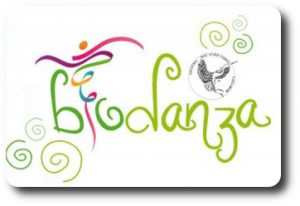 Our work in NVR is also work on ourselves.
Our work in NVR is also work on ourselves.
I would like to tell you about a recent hobby of mine and how the experiences in the group have resonated for me very deeply with mytherapeutic practice and in particular NVR. Over the past 6 months I have been attending weekly Biodanza classes here in Cardiff. Most people in the UK have not heard of this wonderful dance-based system. Antoinette Lorraine, our inspirational teacher, writes on the website Biodanza 4UK: The Magnificent Art of Living’:
“Biodanza is not a mere set of exercises to music or a conventional system of emotional expression, but rather a new vision of life, a process of human development, identity integration, inner transformation, and of developing our human potentials. Biodanza is about learning to ‘dance life’ and rediscover the pleasure of living”
Biodanza is a system of music and exercises which have been scientifically studied and put together with the aim of regaining joy, vitality and the pleasure of living and of preventing physical and psychological disorder.
Biodanza invites you to participate in weekly sessions that safely and gradually convey dance-induced, intensely felt experiences. Biodanza calls these experiences ‘vivencias’, intense perceptions of being alive in the here-and-now that promote emotional integrity and awaken the intuition of life’s immediacy. The term “vivencia” refers both to the experience the sessions induce and also to the Biodanza session itself. The prefix ‘Bio’ derives from ‘Bios’, which means ‘life’.
Together with ‘danza’ in the sense of an “integrated movement full of intention” it gives rise to the metaphor: “Biodanza, the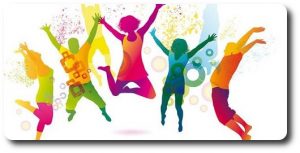 dance of life”. Based on anthropological studies of dance and life-celebrating rituals, Biodanza stimulates a sense of community. Through the regular participation in vivencias, Biodanza helps you to enhance your joy of life and celebrate the sacredness of being alive, enabling a consciousness of universal solidarity. Biodanza has evolved over the last four decades under the wings of Rolando Toro Araneda in Latin America and Europe as a therapeutic, movement-based system for human integration, psychospiritual development, well-being and consciousness expansion.
dance of life”. Based on anthropological studies of dance and life-celebrating rituals, Biodanza stimulates a sense of community. Through the regular participation in vivencias, Biodanza helps you to enhance your joy of life and celebrate the sacredness of being alive, enabling a consciousness of universal solidarity. Biodanza has evolved over the last four decades under the wings of Rolando Toro Araneda in Latin America and Europe as a therapeutic, movement-based system for human integration, psychospiritual development, well-being and consciousness expansion.
I think you can understand now why the UK has yet to fully embrace Biodanza- it is a deep challenge to the British reserve and fear of touch and is much more Latin American in its sensibilities. In Biodanza classes I have been working closely with the group, and noticed how the experiences in class have helped me let go of socially conditioned inhibitions about eye contact and challenged my strong sense of experiencing the gaze of others as critical and judgemental. This has led to me thinking more and more about how shame has played a huge role in my upbringing and led to anxiety about how I am perceived by others.
As a psychotherapist, I am particularly interested in presence and the many ways we all ‘dissociate’ from ourselves, our clients – really many parts of our lives. How shame has separated me from aspects of myself for many years is interesting to me and very relevant to my work as a therapist. We talk a great deal about shame these days in our work with clients. As a practitioner of Non Violent Resistance (NVR) parent therapy, it is a central theme in much of my work with parents and children.
My work with parents in NVR and my deepening process of understanding myself has made me conscious of asking the question: What about our own shame though? How does this block our potential to work fully with our clients? In NVR we coach parents to become more physically and emotionally present to their children and use active protest methods such an Announcement or Sit In.
We explore the quality of the parent’s presence and their gaze to their child a great deal at such moments – we experiment and practice new ways of being and letting go of the old ways and actively work to transform parental presence from either threatening or avoidant into something more peaceful and fully attentive to their child in the moment. Action is very central to NVR- it is not being passive. So too, in Biodanza we use the classes and workshops as a ‘laboratory’, exploring our own potential and celebrating our very existence through the presence of and acceptance by others, and then we find ourselves during the week taking social action in our daily lives.
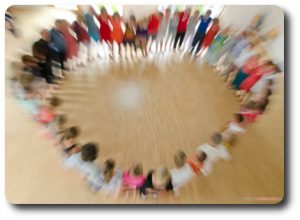 The experience which continues to resonate for me in Biodanza is of challenging the culturally constructed social roles we all play out daily and celebrating embodiment in the here and now. To look others in the eye, to be seen, not judging but only celebrating each of us, our uniqueness and living presence. In NVR, it is the gaze of others which interests me in particular. How can we convey compassion and care to the other, to our children at times of suffering when we are so controlled in society to view that gaze as a negative judgement?
The experience which continues to resonate for me in Biodanza is of challenging the culturally constructed social roles we all play out daily and celebrating embodiment in the here and now. To look others in the eye, to be seen, not judging but only celebrating each of us, our uniqueness and living presence. In NVR, it is the gaze of others which interests me in particular. How can we convey compassion and care to the other, to our children at times of suffering when we are so controlled in society to view that gaze as a negative judgement?
Is this part of the reason for such strong reactions by some practitioners who believe that NVR is ‘shaming’ of the child when it uses the active protest methods? We have, most of us, been continually shamed as children in this society. I can recall many incidents from my childhood when I experienced shame and bullying.
I have come to realise that such incidents were almost constant in my daily life, growing up in a tough working-class community in the Midlands during the 1960’s and 70’s. I notice, and work consciously to acknowledge, the same processes going on with so many parents and children I work with who live in the tough former coal mining communities of South Wales. I had denied and minimized the impact of these events and am only now in my middle years putting words and feelings to them -both for myself and for those I work with.
Gazing now in my mind’s eye, on the child I was, with compassion in a way that I didn’t experience growing up (and I am not blaming my parents here, they are good people, but were subjected to these same cultural and social forces) has enabled me to understand deeper meanings in the NVR work. I think that the helping professions often attract those of us who have been most hurt (and most shamed). It creates a strong and very averse reaction in us when we are faced with a potentially shaming situation.
We could say in trauma language that we are ‘triggered’. How then can we work with powerful processes with our clients, when we are not present to ourselves and have not recognised the social constraints which keep us enslaved? This is my personal journey, to be more conscious of my ‘blocks’, to lay to rest the ghosts of the past and behaviours which kept me safe in my early years, but are not useful now, and to become more present to the clients so as to be the most effective therapist I can be.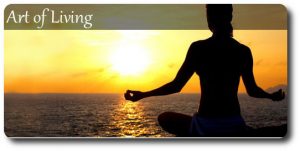
As Pat Levine says: ‘It is the ability to hold back, restrain and contain a powerful emotion that allows a person to creatively channel that energy’.
I was alerted to this process just a few days ago by two particular (quite common and simple) incidents which happened in my CAMHS work. Being able to notice and restrain impulses to action through staying grounded and connected to a ‘wise’ state of mind allowed for dramatically different outcomes and non-anxious responses. In the first incident, I was expecting parents to arrive for an NVR session.
A family support worker was booked in to sit with one of the younger children if needed, but rang to say she was held up in traffic and didn’t think she could make it in time. The administrator who took the call came to me to ask if the session should be cancelled, but I said no, I would ring the parents to discuss. I was unable to get through to the parents, and the administrator, aware of this, said she would go and ask another, more senior nurse, to come and help as she was ‘only in having supervision’.
I said no, that I would manage the situation with the parents when they arrived, which I did – the session went ahead as planned, no child needed ‘babysitting’, the nurse’s supervision wasn’t disrupted and no ‘crisis’ was manufactured.
In the second incident, I was asked about the management of referrals for 2 young people who had been referred due to concerns about possible eating disorders. By their very nature these are urgent cases requiring a response via our newly established Eating Disorders (ED) pathway.
The nurse asking for help was reacting to an expedite letter from a GP, so was feeling anxious that the young people could not wait for the next available ED appointments with our specialist team. Instead, she felt they should be put in as urgent to the next available medical appointment with a non ED specialist clinician. I could feel the pull to act quickly to alleviate anxiety about risk which was present throughout the referring system.
However, I was also aware that it could mean less coherent and less safe care (and a longer input from CAMHS) for the young person and their family if the ED pathway was not followed. I therefore said I would ring the families and talk to them about their concerns and explain our processes, planning with the family about appointment dates. By doing this, it was possible to offer immediate support to the parents, and let them know that the seriousness of the situation was being acknowledged.
Both families were able to wait for an ED appointment with our specialist team and urgently required slots were not utilized unnecessarily. In both these very unremarkable examples, it is possible to see how NHS resources are potentially wasted and families badly served due to staff being in a state of flight or fight. I like this Zen teaching story, also quoted by Pat Levine, which illustrates how, though we experience a strong emotional feeling, we need not act upon it:
A young, brash Samurai swordsman confronted a venerated Zen master with the following demand: ‘I want you to tell me the truth about the existence of Heaven and Hell’.
The master replied gently and with delicate curiosity, ‘How is it that such an ugly and untalented man as you can become a Samurai?’
Immediately, the wrathful young Samurai pulled out his sword and raised it above his head, ready to strike the old man and cut him in half. Without fear and with complete calm, the Zen master gazed upward and spoke softly: ‘This is hell’. The Samurai paused, sword held above his head. His arms fell like leaves to his side, while his face softened from its angry glare. He quietly reflected. Placing his sword back into its sheath, he bowed to the teacher in reverence. ‘And this’ the master replied again and with equal calm, ‘is heaven’.
Here is restraint- at the peak of rage, the Samurai held back from a habitual response. Hell was transformed into a heaven where peace was possible. All moments are moments of choice in our actions and can transform our daily lives from a hell to a heaven. This is our work in NVR and my work on myself.
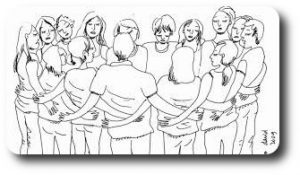 By being active in my search for a more conscious existence where I can take responsibility for my choices, I am developing a more peaceful earthly existence which I think extends to those around me. I wanted to tell you about how Biodanza is part of this self-development process, helping me to play more freely, experiment, connect with others and best of all dance! I have a drive to deepen my work with my clients and to really fuse together the positive action methods of NVR with its philosophy and principles, so that I work with NVR as an approach which has integrity. That means I must deepen my self-awareness and take risks in getting to understand what prevents me being fully present in the moment. When I move past these blocks a more joyous fully lived existence is possible.
By being active in my search for a more conscious existence where I can take responsibility for my choices, I am developing a more peaceful earthly existence which I think extends to those around me. I wanted to tell you about how Biodanza is part of this self-development process, helping me to play more freely, experiment, connect with others and best of all dance! I have a drive to deepen my work with my clients and to really fuse together the positive action methods of NVR with its philosophy and principles, so that I work with NVR as an approach which has integrity. That means I must deepen my self-awareness and take risks in getting to understand what prevents me being fully present in the moment. When I move past these blocks a more joyous fully lived existence is possible.
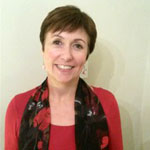
Jill Lubienski
Systemic Psychotherapist & Social Worker
MORE →
